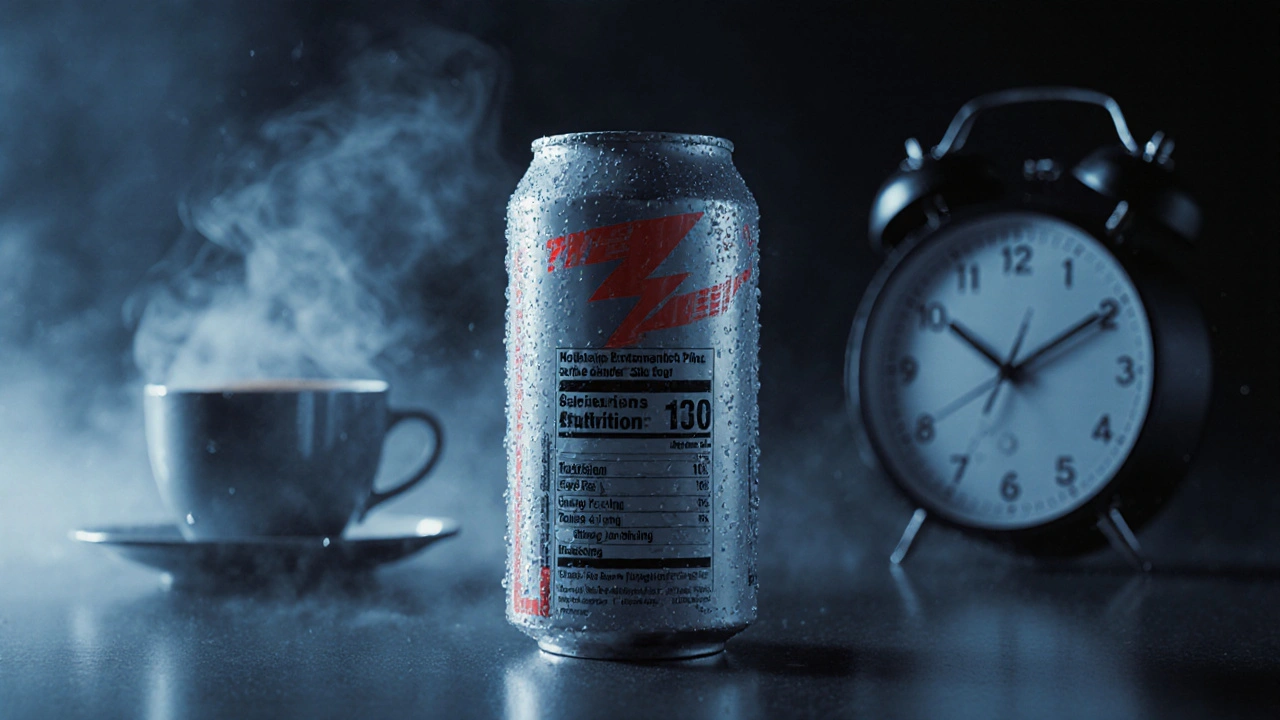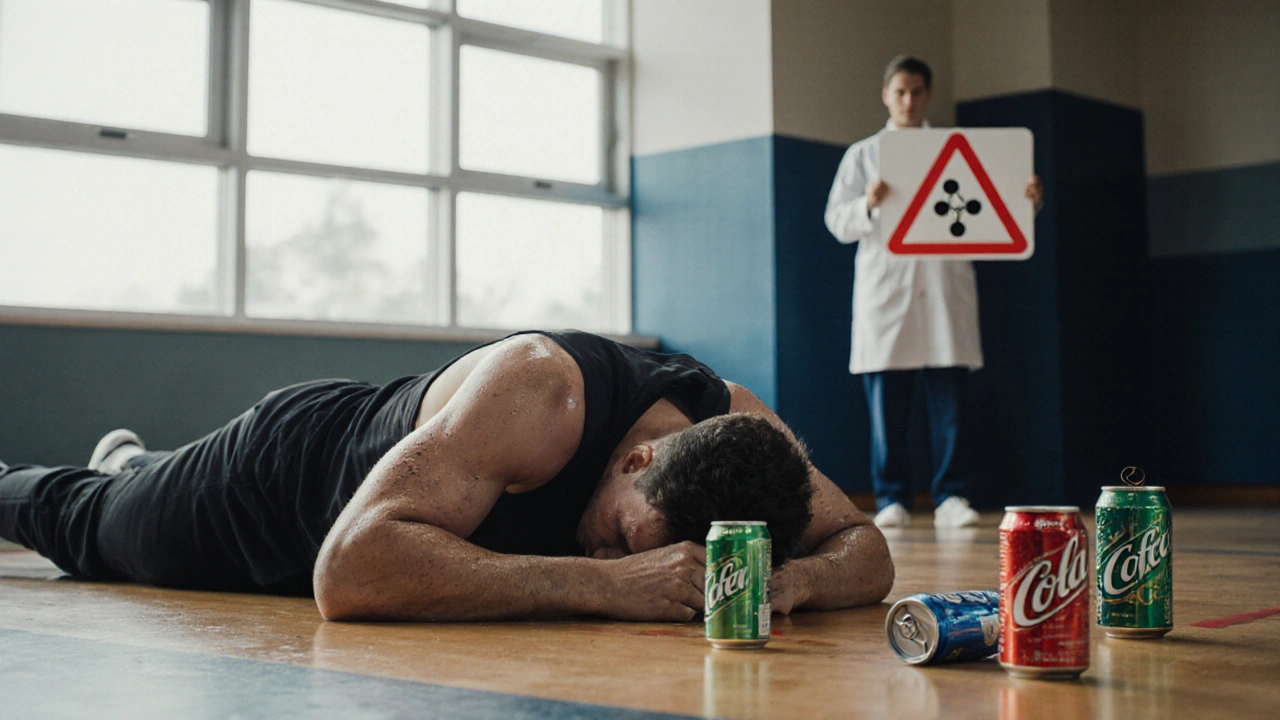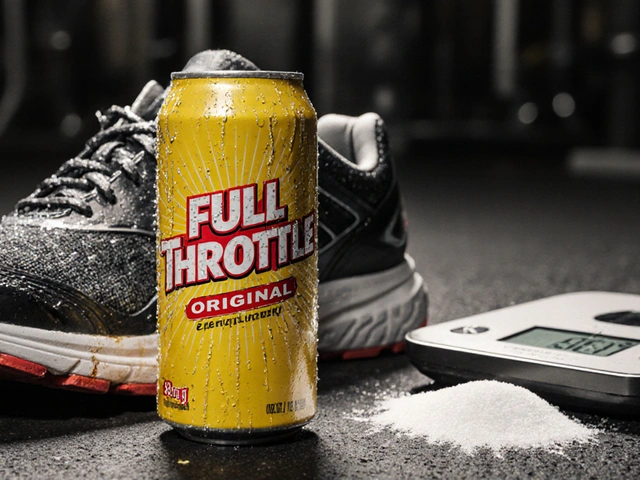Is caffeine a drug? The truth about caffeine in energy drinks

Ever sipped an energy drink and wondered if you’re really just drinking a sugar-loaded soda-or something stronger? The answer isn’t as simple as it seems. Caffeine is the most widely consumed psychoactive substance on the planet. And yes, by any medical or legal definition, caffeine is a drug.
What counts as a drug?
A drug isn’t just something you need a prescription for. It’s any substance that changes how your body or brain works. That includes aspirin, nicotine, alcohol, and yes-caffeine. The World Health Organization defines a drug as a substance that, when taken into the body, alters biological function or structure. Caffeine fits that definition perfectly.
It doesn’t make you hallucinate or get you high like cocaine or LSD. But it does change your brain chemistry. Caffeine blocks adenosine, a chemical that tells your brain it’s time to rest. When adenosine can’t do its job, you feel alert. Your heart rate goes up. Your blood pressure rises slightly. Your muscles tense. These aren’t side effects-they’re the direct actions of a drug on your nervous system.
How much caffeine is in energy drinks?
Energy drinks pack a punch. A typical 250ml can of popular brands like Red Bull or Monster contains between 80 and 160 milligrams of caffeine. That’s roughly the same as one to two cups of brewed coffee. But here’s the catch: many people drink more than one can. And some energy drinks now come in larger sizes-500ml or even 1 liter-with double or triple the caffeine.
Compare that to a 355ml can of cola, which has about 35-45mg of caffeine. Or a cup of black tea at 40-70mg. Energy drinks aren’t just beverages-they’re concentrated stimulant delivery systems. And unlike coffee, they often mix caffeine with sugar, taurine, guarana, and B vitamins, making the effects harder to predict.
Why does it feel different from coffee?
You might wonder why coffee gives you a calm focus, while an energy drink leaves you jittery and wired. It’s not just the caffeine amount-it’s how fast it hits your system.
Coffee is usually sipped slowly over 20-30 minutes. Energy drinks are often gulped down in under five. That rapid intake causes a sudden spike in blood caffeine levels. Your body responds with a surge of adrenaline. That’s why you feel a crash later: your body overcompensates. The sugar in many energy drinks makes it worse. You get a sugar rush, then a sugar crash, all while caffeine is still working.
Guarana, a common ingredient in energy drinks, is a plant that contains even more caffeine than coffee beans. So when a label says “120mg caffeine,” it might actually be hiding another 30-50mg from guarana. That’s why people get surprised by how strong these drinks feel.

Is caffeine addictive?
Yes. The American Psychiatric Association recognizes caffeine use disorder as a real condition. Regular users develop tolerance-they need more to feel the same effect. Skip your morning espresso or energy drink, and you might get a headache, fatigue, irritability, or trouble concentrating. These are withdrawal symptoms, the same way you’d feel without nicotine or alcohol after regular use.
That doesn’t mean everyone who drinks coffee or energy drinks is addicted. But if you feel like you can’t start your day without it, or you get sick when you skip it, you’re experiencing physical dependence. That’s the hallmark of a drug.
Who should avoid caffeine?
Not everyone handles caffeine the same way. Genetics play a big role. Some people metabolize it quickly. Others feel its effects for hours. Pregnant women, people with heart conditions, anxiety disorders, or insomnia should limit or avoid caffeine altogether.
Teens and children are especially vulnerable. Their brains are still developing. The American Academy of Pediatrics advises against energy drinks for anyone under 18. Caffeine can interfere with sleep patterns, which are critical for learning and emotional regulation. In Australia, some schools have banned energy drinks for this reason.
And don’t confuse “energy” with “performance.” Caffeine might make you feel more alert, but it doesn’t improve actual physical endurance. Athletes who rely on energy drinks often end up dehydrated, with disrupted electrolyte balance, and worse recovery times.
Regulation and labeling
Here’s the weird part: caffeine is legal and unregulated in most energy drinks. Unlike prescription drugs, manufacturers don’t have to prove it’s safe for long-term use or disclose all sources of caffeine. In the U.S. and Australia, caffeine is treated as a food additive, not a controlled substance.
That means a drink can legally contain 300mg of caffeine without any warning label. Compare that to a pill form of caffeine, which is capped at 200mg per dose. The lack of labeling transparency is dangerous. People think they’re drinking a soda. They’re not. They’re taking a stimulant dose that could push them into heart palpitations, panic attacks, or even seizures in rare cases.
There have been multiple reports of young adults ending up in emergency rooms after consuming multiple energy drinks in a short time. One 2023 study in the Journal of the American Heart Association found that 1 in 4 ER visits linked to energy drinks involved caffeine overdose symptoms.

What about natural vs. synthetic caffeine?
Some brands brag about “natural caffeine” from green tea or coffee beans. But chemically, it’s identical to synthetic caffeine made in a lab. Your body can’t tell the difference. The source doesn’t change how it affects your brain or heart.
What does change is the package. Natural sources often come with antioxidants or other compounds that slow absorption. But in energy drinks, those natural sources are isolated, concentrated, and mixed with sugar and artificial flavors. You lose the buffering effect. You get pure, fast-acting stimulant.
Is it okay to drink energy drinks?
For healthy adults, occasional use is unlikely to cause harm. One can, once in a while, won’t wreck your health. But daily use? That’s a habit that stacks up. Over time, you risk high blood pressure, sleep disorders, anxiety, and dependency.
And if you’re using energy drinks to replace sleep, cope with stress, or push through exhaustion-you’re treating a symptom, not fixing the problem. You’re not giving your body what it needs: rest, hydration, nutrition. You’re just masking it with a chemical.
Try this instead: drink water, eat a balanced snack, take a 10-minute walk. If you still feel drained, maybe you need more sleep-not more caffeine.
Final thought: It’s not about fear. It’s about awareness.
Caffeine isn’t evil. It’s a tool. Like any tool, it can help or hurt depending on how you use it. Calling it a drug isn’t meant to scare you. It’s meant to make you see it clearly. You wouldn’t take a pill without reading the label. So why drink a can without knowing what’s inside?
Read the nutrition panel. Know how much caffeine is really there. Understand how your body reacts. And if you find yourself needing more and more to feel normal? That’s your body telling you it’s time to step back.
Is caffeine a drug or a stimulant?
Caffeine is both. It’s a drug because it changes how your body functions, and it’s a stimulant because it speeds up your central nervous system. All stimulants are drugs, but not all drugs are stimulants.
Can you overdose on caffeine from energy drinks?
Yes. The FDA considers 400mg of caffeine per day safe for most adults. But energy drinks can push you over that limit quickly-especially if you drink more than one or mix them with coffee or supplements. Symptoms include rapid heartbeat, shaking, nausea, confusion, and in rare cases, seizures or cardiac arrest.
Is caffeine in energy drinks worse than coffee?
Not because of the caffeine itself, but because of how it’s delivered. Energy drinks often contain more caffeine per ounce, plus sugar and other stimulants like guarana. They’re also consumed faster, leading to a sharper spike in blood levels. Coffee is usually slower, with fewer additives.
Why do energy drinks make me crash?
The crash comes from two things: the caffeine wearing off and the sugar spike followed by a drop. When caffeine blocks adenosine, your brain builds up more of it. Once the caffeine clears, all that built-up adenosine hits at once, making you feel more tired than before. Sugar crashes add to that feeling.
Are there caffeine-free energy drinks?
Yes, but they’re not really energy drinks. Without caffeine, they rely on sugar, B vitamins, or herbs like ginseng for a perceived boost. These don’t provide the same alertness as caffeine. Some people feel better from hydration or a snack instead.






Comments (8)
Jeanie Watson
16 Nov 2025
I just drink my energy drinks because I’m tired, not because I’m trying to be a science experiment. I know it’s a drug, but so is my morning coffee. I don’t need a lecture-I need a nap.
Tom Mikota
17 Nov 2025
Let’s be real-caffeine’s a drug, sure, but so is sugar, and we don’t freak out about soda like it’s crack cocaine. The real issue? The marketing. They slap ‘energy’ on a can like it’s a superhero potion, then act surprised when teenagers start shaking like they’ve been electrocuted. And don’t even get me started on the ‘natural caffeine’ scam-chemicals don’t care where they came from, only how fast they hit your bloodstream. #OverPunctuatedButRight
Mark Tipton
19 Nov 2025
There’s a systemic failure here, and it’s not just about caffeine-it’s about regulatory capture. The FDA classifies caffeine as a food additive because the beverage industry lobbied hard to avoid the stricter controls applied to pharmaceuticals. Meanwhile, studies from the Journal of the American Heart Association show that energy drink consumption correlates with a 300% increased risk of arrhythmias in adolescents. And yet, no warning labels. No dosage caps. No age restrictions. This isn’t negligence-it’s corporate malfeasance disguised as consumer choice. The fact that you can legally buy a 500ml can with 300mg of caffeine in a gas station next to candy bars is a moral outrage. We regulate nicotine, alcohol, and even dietary supplements with more rigor. Why not this? Because the profit margins are too high, and the victims are too young to vote.
Adithya M
20 Nov 2025
Bro, I’ve been drinking Monster every day for 5 years. I don’t feel addicted. I feel awake. If you think coffee is better, you’re just pretending you’re more cultured. Energy drinks are just coffee with extra flavor and more bang. Also, I’m from India-we’ve been drinking chai with 3 sugars and 2 shots of caffeine since birth. Chill out.
Jessica McGirt
20 Nov 2025
Thank you for this. I’ve been trying to explain to my 16-year-old that energy drinks aren’t sports drinks. They’re not ‘for energy’-they’re for stimulation. And the crash? It’s not just tiredness-it’s your nervous system screaming for balance. I switched to green tea with lemon and water. My anxiety dropped. My sleep improved. And no, I don’t feel deprived. I feel clearer.
Donald Sullivan
21 Nov 2025
Yeah right, ‘natural caffeine’-like that’s gonna save you. You think your green tea extract is any less toxic than the lab-made stuff? It’s the same molecule. Same receptors. Same heart palpitations. The only difference is the price tag. Companies charge more for ‘natural’ because you’re dumb enough to pay for it. Wake up. It’s caffeine. Period.
Tina van Schelt
23 Nov 2025
Calling caffeine a drug feels like calling sunlight a radiation source-it’s technically true, but it misses the vibe. I love my morning brew. It’s my ritual. My quiet moment before the chaos. But when I chug a Monster before a workout? That’s not a ritual-that’s a chemical gamble. And the crash? Oh honey, it’s not a crash. It’s a full-on emotional dumpster fire with a side of regret. I’ve cried over spilled energy drinks. It’s real.
Ronak Khandelwal
24 Nov 2025
Hey everyone 😊 I just wanted to say-this thread made me realize something beautiful. We’re all just trying to survive the day, right? Some of us use coffee. Some use energy drinks. Some use walks, naps, or even just deep breaths. There’s no shame in needing a boost. The problem isn’t caffeine-it’s a world that tells us we must always be ‘on,’ never allowed to rest. So maybe the real question isn’t ‘Is caffeine a drug?’… but ‘Why do we feel like we need drugs just to be human?’ 🌱☕️